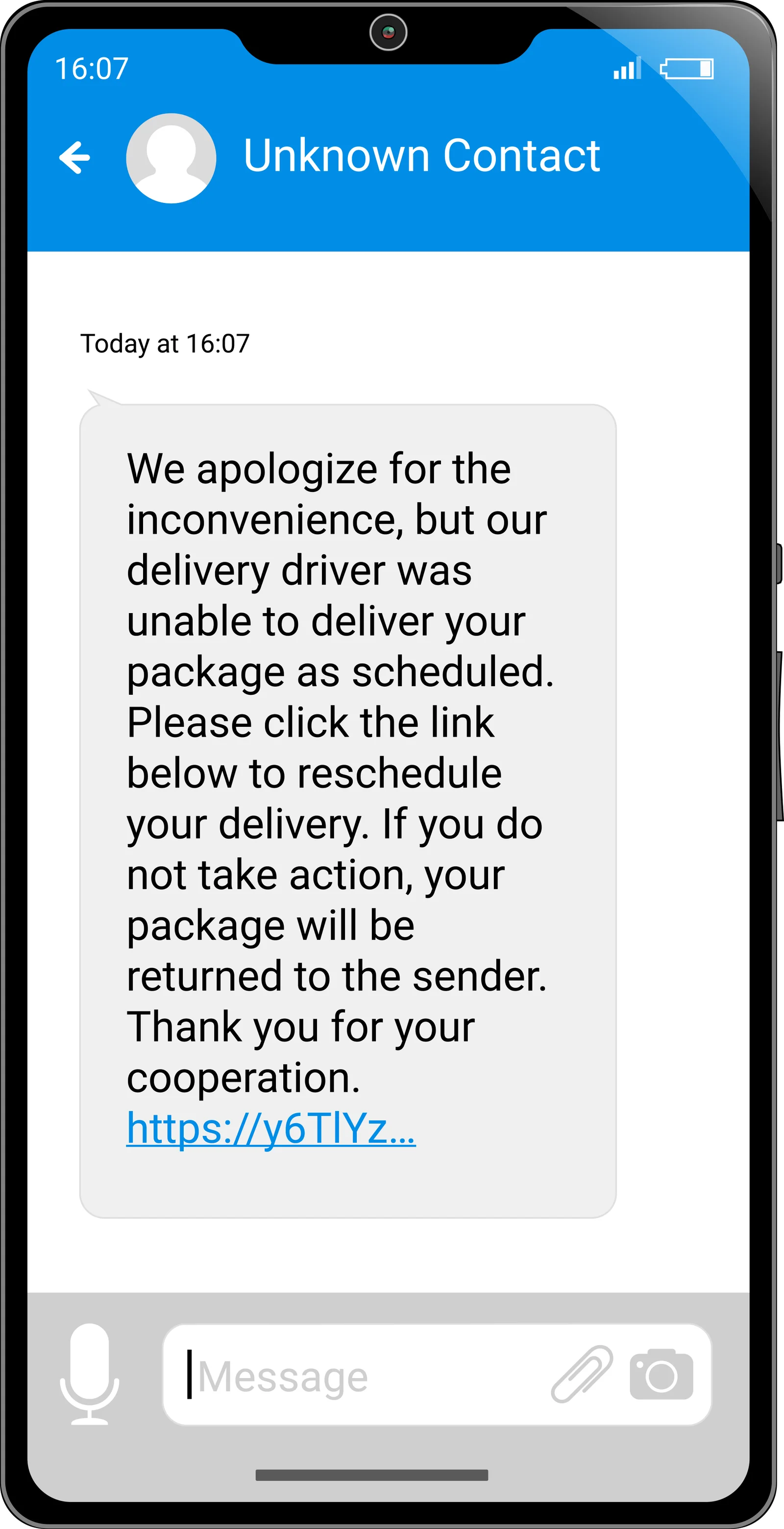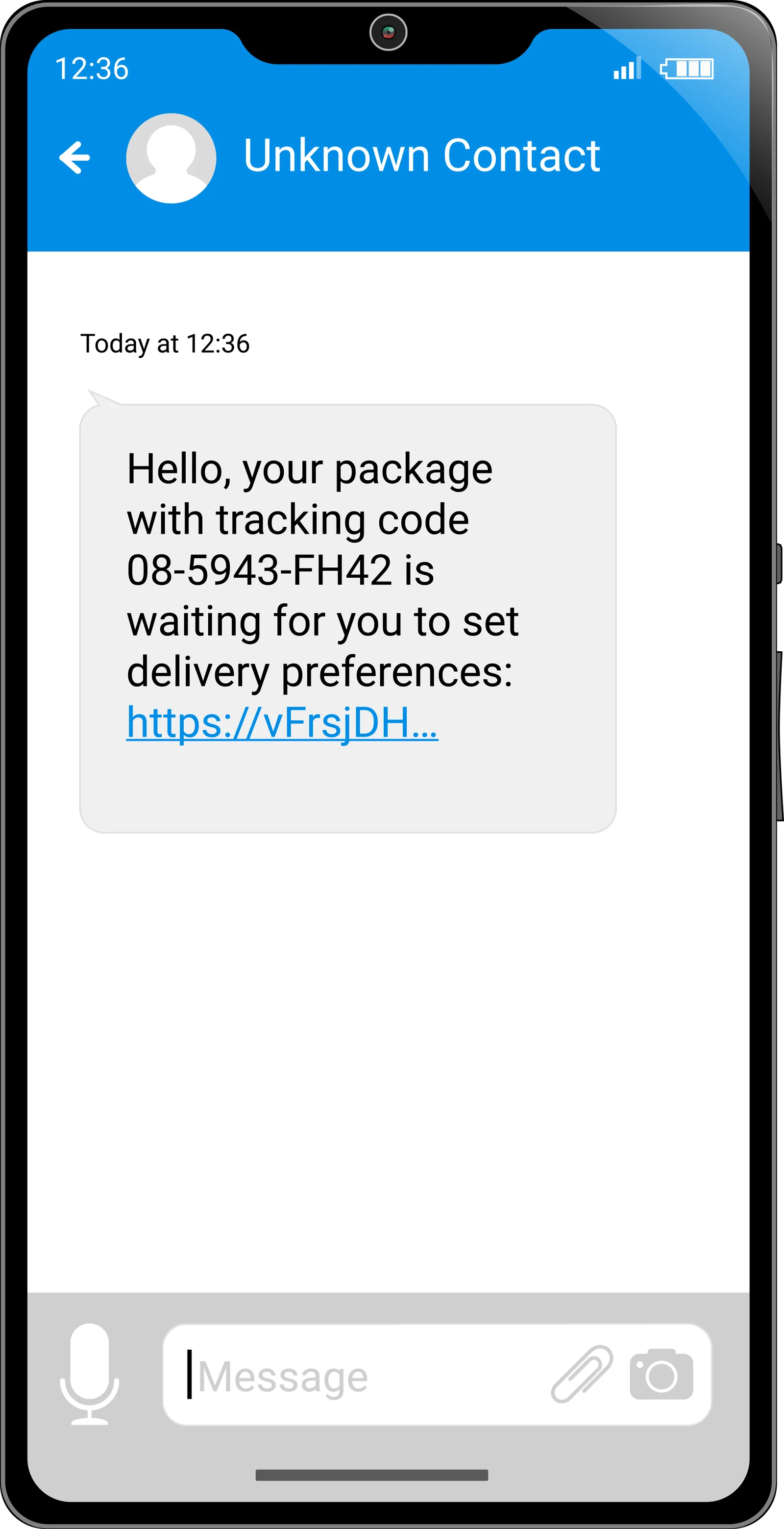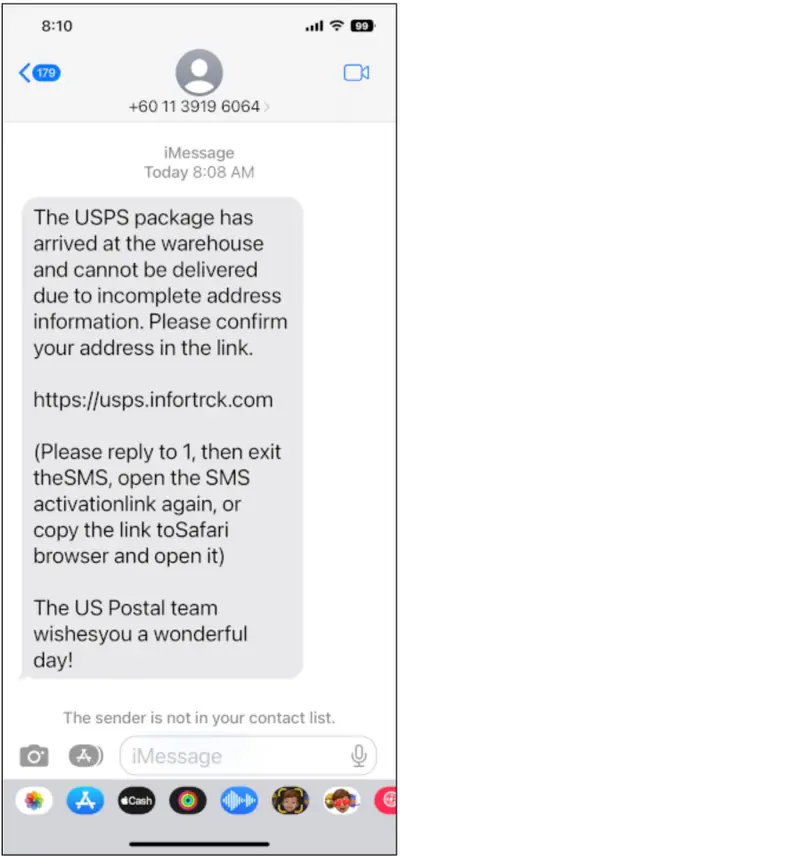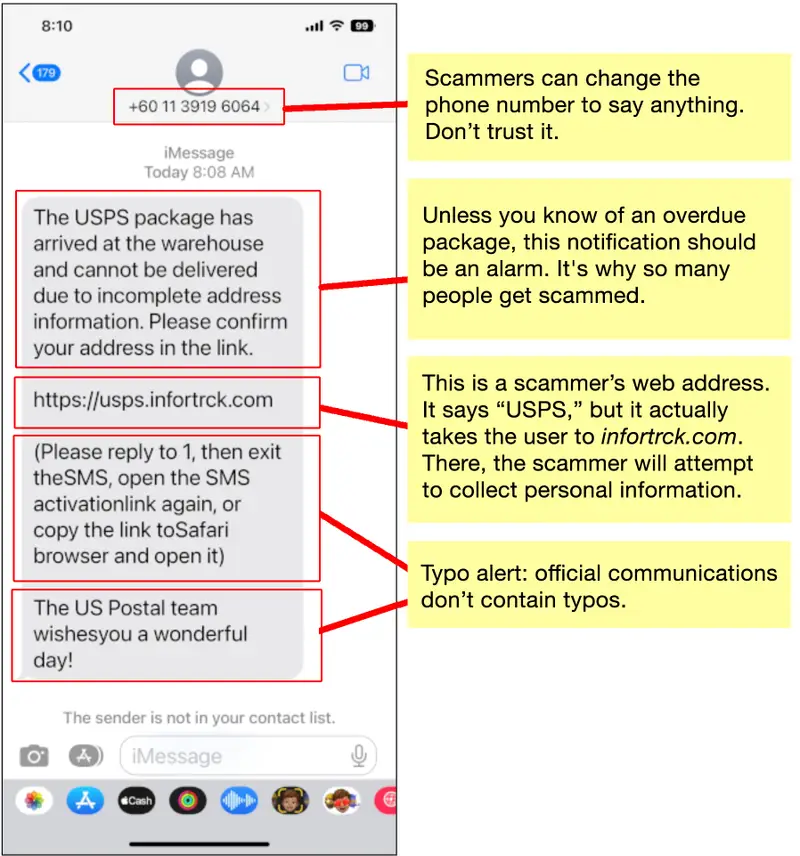

More people now visit scam package delivery websites than visit the U.S. Postal Service online.



Here’s an example of one of the year’s most common scams.
Fake text messages like this have claimed nearly a million victims.
Use your mouse to drag the red slider bar from left to right on the image below, and you’ll see why it’s phony.


Cybersecurity News You Can Use
TOO GOOD TO BE TRUE: A global investigation has uncovered a network of 20,000 websites that sell fake designer clothing labeled Nike, Dior, Lacoste, Hugo Boss, and other brands. The Guardian says at least 850,000 buyers have been victims: none have received an item after paying for it. To make matters worse, the crooks steal the victims’ credit card information and use it to make expensive purchases.
SOCIAL MEDIA SCAM: 404 Media reports on a rise in AI-generated posts on Facebook and LinkedIn that direct users to e-commerce pages that sell items that don’t exist. These scammers are double-dipping. In addition to defrauding the buyers, Facebook and LinkedIn pay them for the traffic they generate.
COMING TO A TAX RETURN NEAR YOU: Artificial intelligence will soon be one of the tools used by the Internal Revenue Service. Government Executive says the agency will roll out AI-powered chatbots to answer user questions on its website. Behind the scenes, the IRS is planning to use AI to help identify tax cheats.


One more thing...
Check out these examples of artificial intelligence from Sora, the new software platform developed by OpenAI.
Users simply type in a description of the video they want, and Sora generates it.
Remember, none of these images are real objects.
Click the play button to play the video.
Answers to readers'
cybersecurity questions
“What should you do if you accidentally ‘click the link’ and then realize your mistake?”
First, close the webpage. If you entered a password on it thinking the website was legitimate, visit the genuine website and change your password. If your computer is running an anti-virus program, open it and click the “scan” or “start” button to make sure no bad software was installed.
“Is clicking the ‘unsubscribe’ link from annoying email ads risky? How else can we get rid of junk messages?”
If the email is from a well-known, recognized company, it’s safe to click “unsubscribe.”
Scummy companies won’t honor that request. Instead, sending them an “unsubscribe” message lets them know your email address is active so they can send you more spam. So, in those cases, don’t respond. Just click the “spam” button in your email app.
Buying things from companies you don’t recognize — especially through ads on social media or unfamiliar emails — can increase the risk of fraud. Visit the credit card issuer and elect to receive texts or email alerts whenever a charge is made. When shopping online, use a “virtual credit card number,” a one-time card number that helps prevent your actual number from being compromised.
Original content © 2024 Aware Force LLC